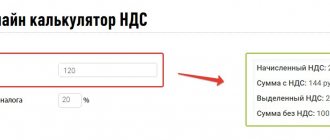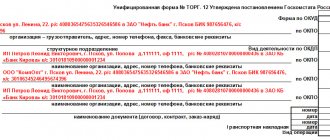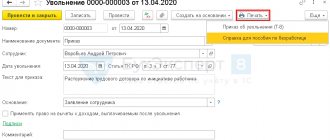About the bonus regulations
The regulation on bonuses for employees is a standard put into effect by management order, which defines the main measures to stimulate and motivate people working at the enterprise in order to increase the efficiency of the enterprise.
This document allows you to adapt the existing rules provided for by law to certain operating conditions of the enterprise, as well as resolve conflict situations that arise regarding the appointment and payment of bonuses.
The importance of this act also lies in the fact that it allows us to confirm the economic justification of the company’s expenses incurred in this area.
Many competent authorities that come to inspect enterprises often ask for this document to verify the correctness of taxation and inclusion in the expense base.
The regulation on bonuses defines those situations and indicators, the achievement of which allows the employee to pay bonuses both for performance efficiency and compliance with labor discipline. And if a dispute arises regarding the legality of assigning or not assigning bonuses, then, guided by these Regulations, you can resolve the issue and protect the interests of the company.
Since the company employs a significant number of employees, it is quite labor-intensive to consider such conditions in their employment contracts. It is best to create a standard and refer to it when concluding contracts. This will also make it possible to streamline incentive measures.
When creating a provision on bonuses for employees, we must remember the main thing. Its norms should not contradict labor legislation and impair the rights of employees.
Attention! At small enterprises, a separate similar local regulatory act may not exist; its norms may be regulated by another document, such as the Regulations on the remuneration of employees.
Material incentives for employees (general provisions)
Current labor legislation does not contain the concept of a bonus and does not oblige the employer to accrue it.
However, there are still references to the possibility of establishing monetary payments of this kind to an employee in the Labor Code. So, wages, according to the provisions of Art. 129 of the Labor Code of the Russian Federation, consists of 3 parts:
- Remuneration for an employee’s work, the amount of which depends on his qualifications, complexity, quantity and quality of work performed by him, as well as the conditions in which it was carried out.
- Compensation payments (additional payments and allowances paid for special working conditions, for example work in difficult climatic conditions).
- Incentive payments (bonuses, allowances and additional payments).
At the same time, para. 1 tbsp. 191 of the Labor Code of the Russian Federation indicates that a bonus is a way of rewarding an employee who conscientiously performs his or her job duties. This means that the employer has the right to independently determine the amount of such incentives and the timing of its transfer to the worker. This is also indicated by the Ministry of Labor of the Russian Federation in letter dated September 21, 2016 No. 14-1/B-911.
What should a bonus clause contain?
The regulation on bonus payments to employees does not have a strictly defined form. Each subject develops it in accordance with existing needs, so it may include various issues regarding stimulation and motivation of work in the enterprise.
General information
This section should indicate the main goals and objectives of the document.
In a large company consisting of many divisions, regulations can be drawn up both for each division and for groups that have the same types of bonuses.
You also need to determine what types of employees the document applies to - full-time, part-time, all, etc. This will serve as justification for the expenses incurred.
You might be interested in:
Local regulations of the organization: what are they, list of basic documents
Types of bonuses and grounds for payment
In this section you need to list all types of bonuses that can be assigned at the enterprise, as well as the indicators for which they are paid. This section must be formatted in such a way that it is immediately clear what bonus will be awarded to the employee and for what.
It is allowed to include in the section bonuses that the company will pay from its own profits. They can be assigned, for example, when certain holidays occur.
The criteria for assigning a bonus can be set either single or multiple. In the latter case, a bonus can be awarded only if all of them are met.
Attention! If the organization pays only one type of bonus, then in this section you can also indicate the procedure for calculating it. However, a better step would be to put this in a separate section.
Calculation and approval of the bonus amount
Such a section must be included in the document for each type of bonus that is accrued at the enterprise.
First you need to identify the circle of people who can qualify for this type of award. It also outlines the process for paying this type of bonus to individuals who have either left the company or have just joined the workforce.
The next step is to define the conditions under which the employee will receive a bonus. All types of violations are listed separately, if detected, the size of the bonus may be reduced, or the employee may be deprived of payment altogether.
These include:
- Penalties or reprimands due to violation of discipline;
- Incomplete fulfillment or non-fulfillment of duties specified in the employee’s job description;
- Violations of established labor protection rules, safety regulations, fire safety, internal regulations, etc.
- Failure to show up for work, absence from work for more than 3 hours, appearing under the influence of alcohol or drugs;
- Loss or damage to property owned by the company.
The amount of the bonus paid can be set either in strict monetary terms (for example, 3,500 rubles) or as a percentage (for example, 25% of the salary). If the regulations establish a percentage of the bonus, then the employer has no right to pay it below the established percentage.
The law does not establish the possibility of depriving an employee of a bonus, either fully or partially. The amount of payment can be reduced only if the employee has committed any offense for which a reduction in the bonus is indicated. This means that when drawing up this document, it is necessary to clearly state by what amount the premium is reduced if a certain violation is committed.
The premium can only be reduced in the same period in which the corresponding violation was detected. It is prohibited to transfer punishment to subsequent periods.
If it is not possible to clearly determine the size of the premium based on a quantitative indicator, then you can specify its upper and lower limits. In this case, the head of the department will independently determine the amount of the bonus for the employee in this range, guided by the results shown by him.
In the description of the procedure for assigning a bonus, it is also necessary to indicate in detail the methodology by which it will be calculated. It is also necessary to determine which of the officials decides whether to assign a bonus or not, as well as how exactly the amount of the bonus for each employee is communicated to the payroll manager.
Attention! Another important point in this section is how often this type of bonus is paid. This could be an appointment every month, quarterly, once a year, etc. You also need to indicate the period within which the decision on paying bonuses to employees must be made.
Final provisions
This section must indicate the manner in which this document is to be implemented. The period during which it is valid is indicated next to it.
The date from which the provision comes into effect must be recorded in the provision or in the order by which it was put into effect. If the validity period of a provision is not specified, it is considered to be of unlimited duration.
Legal regulation
Since payment of bonuses is not the responsibility of the employer, each legal entity independently develops its own bonus system.
The manager himself decides which types of bonuses to use and in what order. At the same time, current legislation allows them to be paid both in kind and in cash. In any case, this system should operate only within the framework of current legislation.
As for the legislative regulation of this issue, it is carried out on the basis of the relevant provisions of the Labor Code of the Russian Federation, namely, Articles and 135.
They contain provisions for the calculation and payment of monetary incentives in collective and labor agreements. In addition, this issue is directly regulated by the Regulations on Remuneration, where the document in question may be included as a section or subsection.
It is worth noting that the organization has the right, but not the obligation, to develop the Regulations, therefore the question of the appropriateness of this step is decided in each specific case by the head of the legal entity individually.
Supervisory authorities do not have the right to require the mandatory presence of this local act at an enterprise or organization.
In the event that management decides not to develop or apply the said Regulations, its function is performed by other personnel documents, for example, relevant orders.
Procedure for approval and amendment of regulations
The regulation on bonuses for employees does not apply to mandatory documents. However, when using it, the interests of all employees of the company are affected, and therefore it is necessary to follow the established procedure for its implementation.
Initially, the draft of the newly created normative act must be sent to the trade union body for its approval. The latter can accept it, or formalize an act of disagreement, and then the parties must come to a common opinion through negotiations.
If a trade union has not been formed, then this step is omitted.
You can put a document into effect in one of the following ways:
- By affixing the stamp “I approve” on the cover of the local act with a transcript of information about the person who performed this action;
- Issuing an order approving the regulations on bonus payments to employees. A separate order is issued for the enterprise approving the bonus regulations, which puts the regulation into effect. The details of this order must be indicated on the position.
How to correctly draw up an order to approve a position
Important! After the document is accepted, its contents must be communicated to the company’s employees. They must familiarize themselves with it, and then sign either in the journal intended for this purpose or on the familiarization sheet.
If there is a need to make changes to the regulation, the responsible employee must communicate this in a report or memo. Based on it, the manager must form a working group or appoint a responsible person who will draw up a new document.
Procedure for making changes to the regulations
The law does not establish how an employer must make changes to existing regulations. If the company has a trade union body, then such actions must be coordinated with it. Otherwise, you can issue a separate document with a list of changes, or adopt the provision in a new version.
The process for accepting changes must be the same as the way the original document was implemented. If the provision on bonuses for employees was put into effect by order, then to introduce changes it is also necessary to draw up an order. If the acceptance was made by affixing the stamp “Approved”, then the changes must be done in the same way.
The law establishes that the employer is obliged to familiarize all employees with any internal act against signature. Exactly the same action must be performed when accepting changes - each employee must read it and sign it.






